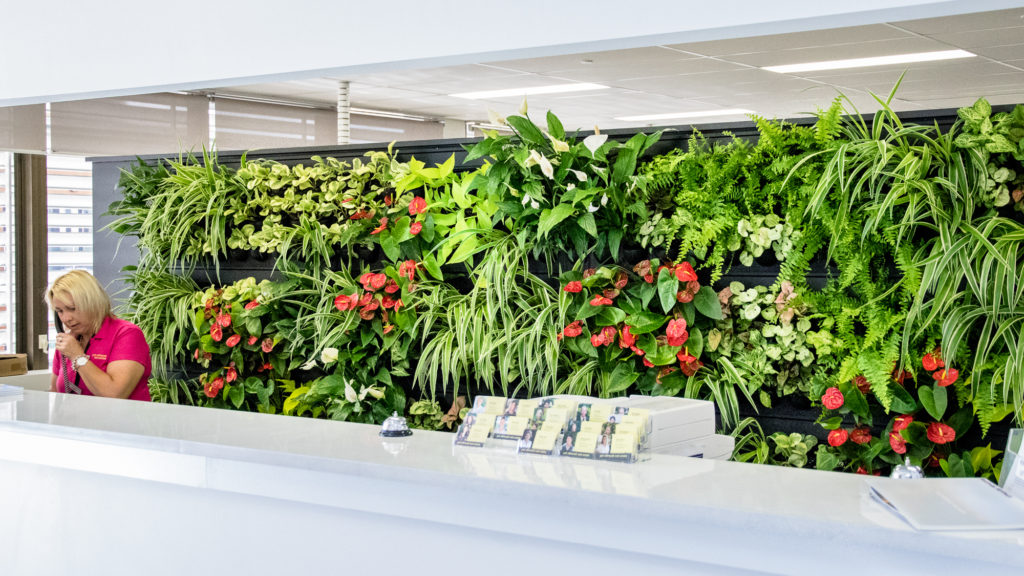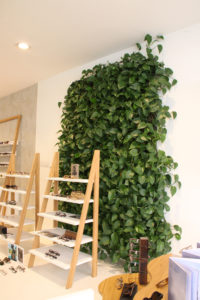
The latest report to Interior Plantscape Association from Plants and Urban Air Quality Group, School of Life Sciences, University of Technology Sydney (UTS), titled ‘Towards Development of Indoor Plant Walls for Improved Indoor Air Quality’ has been released. This study, although preliminary, contributes to the baseline scientific information needed for the development of indoor plant-walls and other living-green installations.

Carbon Dioxide Reductions
Excess CO₂ causes drowsiness with levels in higher concentrations indoors, mainly from occupants’ breathing but also from any non-flued gas appliances.The study found that plant walls have the ability to reduce Co2 levels from 13 percent up to 23 percent, when provided with adequate lighting, therefore having significant benefits to the health, wellbeing and productivity of occupants.

Airborne Particulate Matter Reduced
The study also suggests there was a trend towards reductions of extremely fine airborne particulate matter (PM) in urban areas, including inside commercial or other buildings. PM is emitted from fossil fuel combustion, which mixes with natural dust etc, causing city haze. These ultra fine particles are known to be a serious health hazard. Lung and cardiovascular disease, and well as the increasing incidence of autism, have been linked in particular with levels of airborne particulate matter.

Importance of Findings
With 80% of the Australian population living in urban areas and spending about 90% of our time indoors, the ability of plant walls to reduce levels of all types of indoor air pollutants has significant advantages. The use of any living-green installations to refresh indoor air in air-conditioned city buildings could also reduce the energy load on the building, and its footprint, contributing to the goal of urban sustainability.
“This study is important since it reinforces previous studies demonstrating the benefits of indoor plants and gives us a clear direction for future research,” Prof. Margaret Burchett from UTS Plants and Urban Air Quality Group said.“It is clear that investing in indoor greenery and plant walls more than repay the costs in terms of occupant well-being and performance so investigating the most effective methods of incorporating plant walls makes sense.”
The Interior Plantscape Association and UTS would like to thank the previous New Zealand Association PAWA (Plants At Work Association) for funding this Indoor Plant Walls project and Mr Jock Gammon, Junglefy Pty, Ltd., for providing access to the plant-wall installations studied.
For further information please contact Prof. Margaret Burchett from the research team at the Plants and Urban Air Quality Group School of Life Sciences, University of Technology Sydney, Margaret.burchett@uts.edu.auNerida Hills, Interior Plantscape Association President thepresident@interiorplantscape.asn.au or visit ipa.asn.au